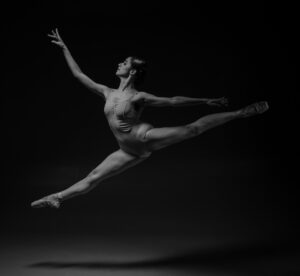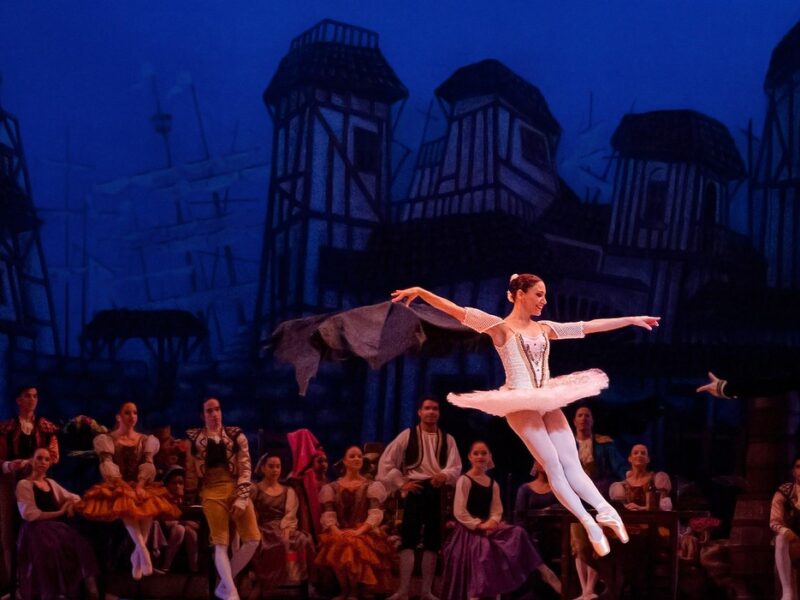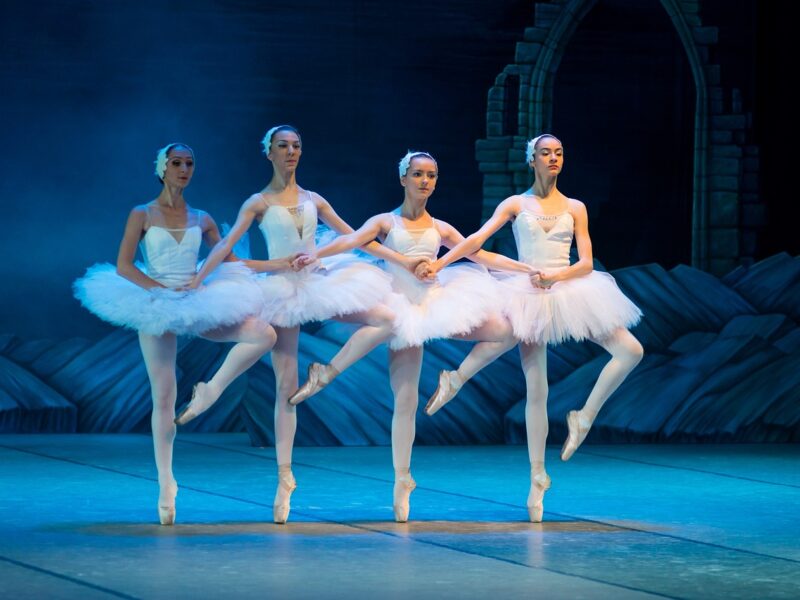Soaring saut de chats and gravity-defying sissonnes… grand allegro can be incredibly impressive when it’s performed well. So how can we wow the crowds with our cabrioles and assembles? Well, it all comes down the POWER and HEIGHT of our jumps!
What actually determines how high we can jump?
This would be our muscles… or to be more accurate our MUSCLE FIBRES.
Humans have two different types of muscles fibres known as SLOW TWITCH muscle fibres and FAST TWITCH muscle fibres.
We use slow twitch muscles for endurance-based exercise or activities which require slow repeated muscle contractions over a longish time (think adage and pliés).
However, when it comes to jumping, we use our fast twitch muscles to push us high into the air as these muscle fibres are great providing us with a short, quick power blast (think sprinters as opposed to long-distance runners).
So basically, to improve the height and power of our jumps in grand allegro, we need to get these fast twitch muscle fibres moving into action!

How do we build and strengthen our fast twitch muscle fibres?
Everyone is born with an equal-ish mix of slow twitch and fast twitch muscle fibres, however due to the nature of ballet, most dancers tend to be slow twitch dominant, meaning they have more slow twitch muscle than fast twitch.
Now this is great for adage, however when it comes to grand allegro it’s not so helpful…
Luckily, there’s a lot we can do to build and strengthen these fast twitch muscle fibres that we so desperately need to improve the power and height of our jumps in grand allegro, and the best bit is they’re actually quite easy to build!
The best way to build new fast twitch muscle and/or strengthen the fast twitch muscle that we already have is through PLYOMETRIC training, or by practicing movements which require a great deal of power or explosiveness from the muscles (e.g. a box jump or jump squat) whilst also adding in resistance (this is usually in the form of a weight).

Which exercises can I do to build my fast twitch muscle fibres?
Coincidentally, many of the exercises used to build fast twitch muscle fibres to improve our grand allegro also involve jumping!
Here are some of my favourite exercises which you can add into cross training routine…
No #1. Weighted Box Jump
Now this one involves the plyometric jump boxes that you’ll find at your gym, however if you don’t have access to these you could try jumping onto a lowish wall or surface. (Disclaimer: Make sure you choose a safe, sturdy surface that isn’t too high. Make sure the surface is wide enough to avoid falling off)
Step 1) Stand with the plyometric box in front of you and your feet positioned in a sturdy stance, shoulder-width apart.
Step 2) Hold a weight such as plate or kettlebell securely against your chest -I’d recommend skipping this step until you’re comfortable jumping onto the box.
Step 3) Bend your knees and jump up onto the box, landing with your knees bent and your feet positioned shoulder-width apart.
Step 4) Stretch your legs and then carefully step down to the floor and repeat.

No #2. Weighted Squat Jumps
Step 1) Stand with your feet just wider than shoulder-width apart. Some people find it more comfortable to squat with their feet turned out slightly.
Step 2) Hold a weight such as a kettlebell or plate securely against your chest.
Step 3) Bend your knees and hinge at the waist (bring your torso forwards slightly) into a squat position.
Step 4) Jump into the air and extend you legs before landing in the original squat position.
Step 5) Repeat
Top Tip! You can adjust your foot placement to change the target area of your squat jumps! A wider stance is great for hip and glute engagement; however a narrower stance is better for activating the quads.
No #3. Weighted Single Leg Hops
Step 1) Stand on one leg and hold a weight such as kettlebell or plate securely against your chest.
Step 2) Bend your standing leg and hop, extending the leg in the air.
Step 3) Bend your standing leg as you land and repeat the hop from this position.
Top Tip! This exercise is also great for improving ankle stability for landings in both petit and grand allegro!
These exercises are all examples of PLYOMETRIC TRAINING, which involves contracting and stretching the muscles very quickly. Research has shown that this type of training helps to build fast twitch muscle fibres because it involves the stretch-shortening cycle (SSC).
The SSC occurs when we jump, and is basically the super speedy sequence of the stretching and contracting of our muscles as we bend our legs to start the jump, then extend them mid-jump, before bending again to land the jump!
Final thoughts…
So that’s it Ballet Besties, the real key to improving the power and height of your jumps in grand allegro is not simply jumping over and over again and hoping for the best, but building and strengthening our fast twitch muscle fibres!
You can do this by incorporating plyometrics into your cross-training regime, or by performing explosive movements using your body weight or an added kettlebell or plate to get all the gains!
Give these exercises a go and watch yourself soar!
**FRIENDLY DISCLAIMER: All information, guidance or advice provided on this site is for informational and educational purposes only. The use of this information is at your own risk. **

